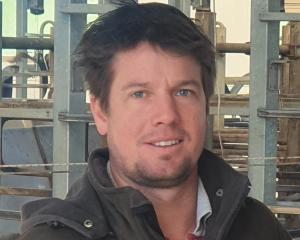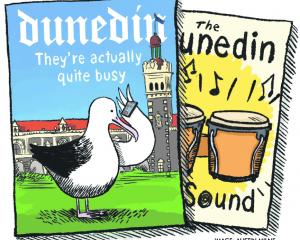
Dunedin artist Rod Eales says her garden reflects her commitment to composition, texture and line, and it’s easy to appreciate how she has brought those elements together in her Upper Junction property.
The garden of just under 1ha was originally part of Broadacres, a nursery started in the 1880s by Irish-born Henry Bennett, and which his descendants sold in 1991.
By the time Eales and her husband bought the property 13 years ago, pines and macrocarpa planted as shelter on the southern and western boundaries had grown massive.
“It was so dark ... and there was nothing here,” Eales said.

Getting the trees out was a huge project and because they had to be dragged across the property to the road, no garden could be contemplated until they were gone.
As a result, it was only five years ago that work on the garden really got under way.
Bennett had specialised in trees and shrubs, and “60 or 70 rhododendrons”, encompassing numerous species and varieties, were still there, and Eales’s studio looks out on a selection of them.

Later-flowering varieties are mostly in the neighbouring paddock, and there is “a super-dark, almost black one that comes out in February”.
Decades of untouched pine needles under the old trees were great, she said.
“They [had produced] soft and beautiful soil. Everything grows.”

Pruning now uses the “chop and drop” method, which mulches and feeds the soil.
Paths were created and edged with rocks like those in the garden’s old stone walls.
Eales has no idea how many rocks she carried but admits she developed tennis elbow from lugging them around.
From the native area, the paths lead upwards to a lawn, which in turn passes through a gate in the rock wall to another grassed area with a large central garden and up again to the house, once a Bennett family home.
Fruits include a walnut, ‘‘Luisa’’ and other plums, a lemon, feijoas, cranberries, grapes and two columnar Bolero® apples.
Vegetables are grown in raised beds protected from the rabbits that plague the area.
That means choosing, wherever possible, flowers that rabbits ignore.

As a result, there are swathes of pink Bergenia, lots of daisies, vivid blue Lithodora and varied primroses, as rabbits can be poisoned by a substance in Primulas, so know to avoid them.
“I like flowers, they influence my work and I want to grow more,” Eales said.
Although her work has encompassed many subjects, from landscapes to still life, she now concentrates on flowers.
Each of her large, circular paintings takes about two months to complete and I’m captivated by her recent Through Rose-tinted Glasses, a study of roses in pinks and crimson.
Although Eales claims not to be a gardener, her property suggests otherwise.
Her artist’s vision has made the garden a true delight to visit.

To see:
To showcase her work, Rod Eales is opening her studio and garden the first weekend of each month, starting on October 5 and 6, between 11am and 3pm.
The property is at 20 Cleghorn St, Upper Junction, Dunedin, and entry is free.
Other times can be arranged by phoning 021 0251-0972.













